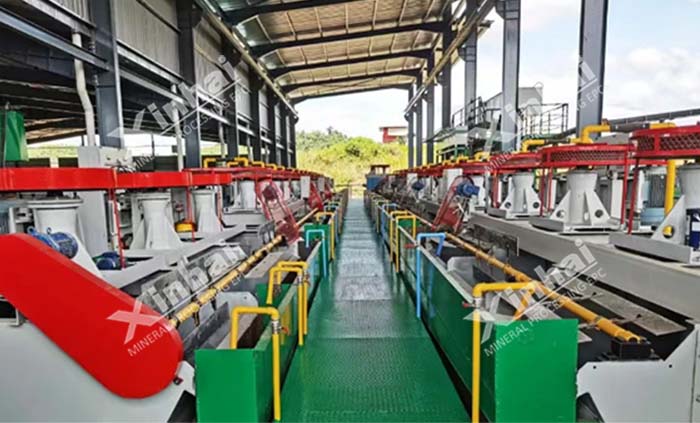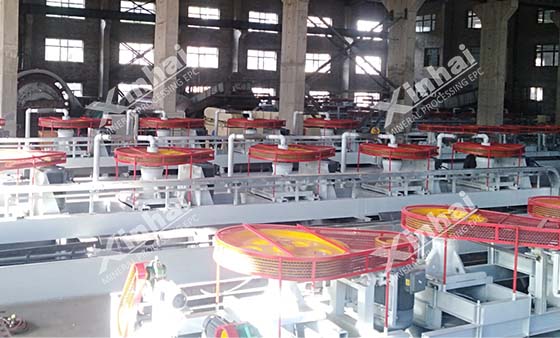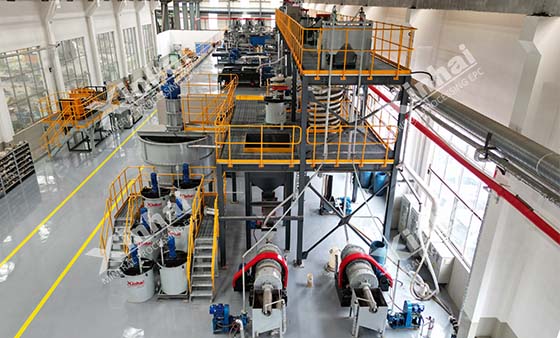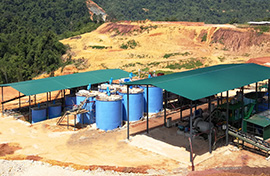-
 E-mail
xhcnlite@ytxinhai.com
E-mail
xhcnlite@ytxinhai.com
-
 Call Us
008615503206672
Call Us
008615503206672
 E-mail
xhcnlite@ytxinhai.com
E-mail
xhcnlite@ytxinhai.com
 Call Us
008615503206672
Call Us
008615503206672
2025-05-28 Views: 1401
Warm Tip: If you want to know more information, like quotation, products, solutions, etc., please Click here ,and contact us online.

Iron ore serves as the cornerstone of steel industries, widely used in steelmaking and machinery manufacturing. Over 300 iron-bearing minerals exist in nature, but only 20+ are commercially viable. The four primary types are magnetite, hematite, limonite, and siderite. Beneficiation methods vary significantly based on ore characteristics and require tailored optimization.
Composition: Iron oxide (Fe₃O₄), Fe content 72.36%, black color, cherry-red streak, strong magnetism (Mohs 5.5-6.5, SG 4.6-5.2).
Processes:
1. Single Low-Intensity Magnetic Separation (LIMS): Applied to simple, easily-separable magnetite ores.
Continuous Grinding-LIMS: Uses 1-2 stage grinding based on disseminated grain size.
Stage Grinding-LIMS: For fine-grained low-grade ores. Roughing after primary grinding discards tailings; secondary grinding for cleaning.
2. LIMS-Reverse Flotation: Enhances concentrate grade by removing SiO₂:
Cationic reverse flotation (amine collectors)
Anionic reverse flotation (starch depressants)
3. Combined Processes:
For polymetallic ores:
LIMS-Flotation (sulfide removal)
LIMS-HIMS (hematite recovery from tailings)
LIMS-HIMS-Flotation (complex associations)

Composition: Ferric oxide (Fe₂O₃), Fe 69.94%, weak magnetism (Mohs 5.5-6.5, SG 4.8-5.3).
Methods:
1. Gravity Separation:
Fine-grained: Grinding + spirals/jigs for high-grade concentrate
Coarse-grained: "Crushing-only" with coarse tailing rejection
2. Flotation:
Direct flotation: Fatty acids (e.g., oxidized paraffin soap) for simple ores
Reverse flotation: Cationic (dodecylamine) or anionic collectors for high-grade ores with floatable gangue
3. Combined Processes:
HIMS-Flotation (complex ores)
Roasting-LIMS (magnetization of weakly magnetic ores)
LIMS-HIMS (mixed magnetite-hematite)

Composition: Hydrated iron oxide (mFe₂O₃·nH₂O), Fe 50%-65%, weak magnetism (Mohs 1-4, SG 2.7-4.3).
Strategies:
1. Gravity Separation:
Scrubbing + heavy media separation for coarse ores
2. High-Intensity Magnetic Separation (HIMS):
Recovers fine particles despite weak magnetism
3. Flotation:
Requires desliming; uses direct (anionic) or reverse (cationic) flotation
4. Integrated Processes:
Gravity-HIMS (heterogeneous ores)
Selective flocculation-flotation (high slimes)

Composition: Iron carbonate (FeCO₃), Fe 48.2%, non-magnetic (Mohs 3.5-4, SG 3.8)
Techniques:
1. Gravity Separation:
DMS/jigs for coarse-grained ores
2. HIMS:
Upgrades Fe grade after desliming
3. Flotation:
Direct: Acidic/alkaline processes with fatty acids
Reverse: Anionic (quartz flotation) or cationic (carbonate removal)
4. Magnetizing Roasting-LIMS:
Converts siderite to magnetite via roasting (600-800°C), followed by LIMS

Iron ore beneficiation demands rigorous mineralogical analysis (liberation size, associations) and process testing. Key considerations include ore type, scale, and economics. Integrated flowsheets combining grinding, magnetic, gravity, and flotation methods maximize recovery and grade while reducing impurities like SiO₂ and Al₂O₃.
If you have any other questions, welcome to consult us! We have qualified Mineral Processing Laboratory and Pilot Center to help you with the mineral processing!

No. 188, Xinhai Street, high-tech Industrial Park, Fushan District, Yantai, Shandong, China.

Please leave your message here! We will send detail technical info and quotation to you!